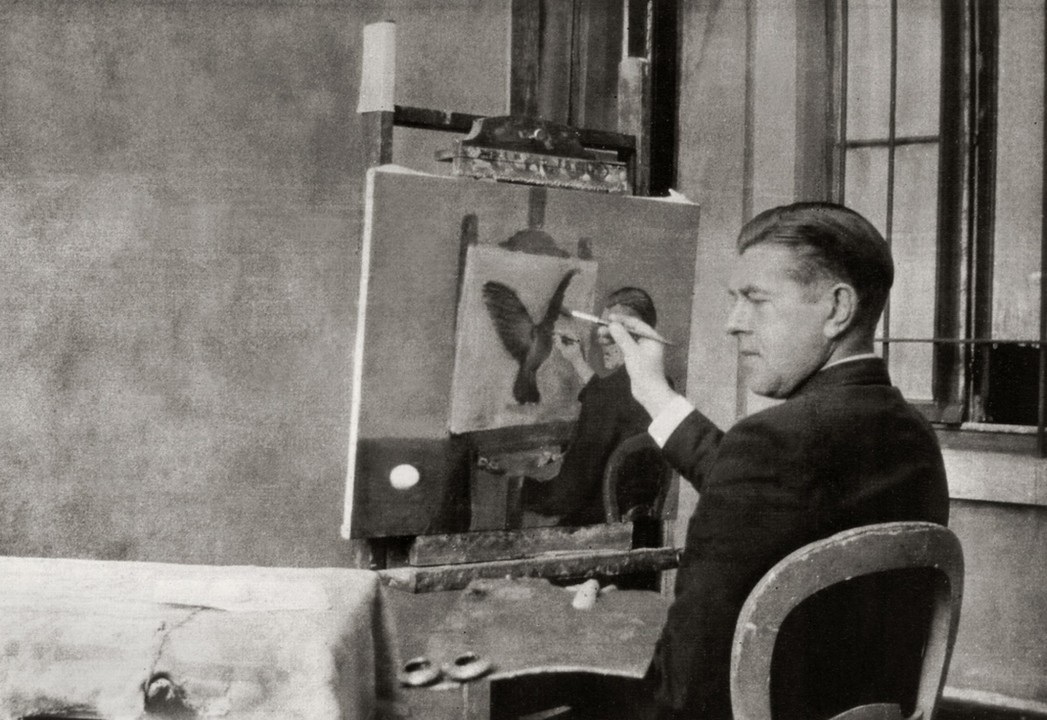
Review: 'René Magritte: The Revealing Image, Photos and Films' at the Latrobe Regional Art Gallery, Victoria
Exhibition dates: 19th August – 19th November 2017
They sent me 10 media images... and I could not get a handle on this exhibition. They sent me the superlative catalogue... and still I could not visualise this exhibition in my mind. Only by going and actually seeing this impressive exhibition in the beautifully refurbished spaces of Latrobe Regional Gallery do you really begin to understand its sangfroid - that Magritte's photographs are a hyper-reality take on the mystery of the everyday, accomplished by the artist altering the very conception of what a photograph is. ...
I feel that these tiny, tiny portraits are about extending the possibilities of the image through the joy of living. To play, to have fun with friends, to travel to places, to talk about ideas, about art and love and life, to debate the titles of images and paintings with comrades. In this regard, the interwar period and the avant-garde was immensely creative in terms of an investigation into the multiplicities of the world. The photographs are a reality take on the mystery of the everyday, a counterpoise to the severity and austerity of Magritte's paintings. Paraphrasing Alfred Gell, who was recently quoted by Zara Stanhope in an essay on the cultural agency of photographs, I believe that not only do works of art "have the power to act and to influence others"1 they also have the power to act and influence each other through human agency. The production and titling of Magritte's paintings and photographs was a collective and transformative process (undertaken with his group of friends), part of a reflective process that articulated the material conditions of a given situation (in this case, the Belgian Surrealist movement), in which the paintings and the photographs extend the possibility of being through an engagement with each other. For example, in The Death of Ghosts (1928) you really really have to look to try and understand what is going on within the picture frame. Even then, you wonder what is going on... the movement of the image, the darkness, the person lying in the background which is then linked to the painting The Apparition (1928) which uses the same silhouette of the figure, a trope that Magritte often uses when switching from photograph to canvas.
Throughout this wonderful exhibition you begin to formulate ideas as to how, firstly, the photograph is used as source material for Magritte's art, as in the photograph for the painting Universal Gravitation (1943) where a man puts his hand through a wall (or is it the other way around, where the painting informs the photograph?) and, secondly, how the photograph is not used as a source material, but renegotiates the spatio-temporal dimensionality of the paintings. And becomes a new art work that stands by itself. And then you have to factor in the moving image: the sensibility of film, that movable feast of magic and masks, smoke and mirrors. By placing models, friends and paintings in the same photograph, Magritte's images conflate time and space and ultimately challenge the concept of photography as a memory aid.
Finally, there is so much mystery pres(t)aged within these photographs (the titles further compounding the dissolution of reality), that the already fragile grasp of the referentiality of the image is shattered. Go travel and see this exhibition, for it was a true pleasure to spend a variable amount of time in their intimate, visceral, and intellectual, embrace.
Marcus
READ THE FULL REVIEW AT https://wp.me/pn2J2-9Cd
René Magritte (1898-1967) Flirtatiousness (La coquetterie), René Magritte at the Jardin des Plantes, photo-booth photo 1929 Original photograph 43.2 x 33.2 cm (framed) Private collection, Courtesy Brachot Gallery, Brussels
Jacqueline Nonkels René Magritte painting 'Clairvoyance' Brussels, 4 October 1936 Original photograph Published under "fair use" for the purposes of academic review
René Magritte (1898-1967) The Death of Ghosts 1928, Le Perreux-sur-Marne Jacqueline Celcourt-Nonkels and René Magritte René Magritte/ Courtesy Brachot Gallery, Brussels Published under "fair use" for the purposes of academic review
"Although the silhouette of a man (probably Magritte) in The Death of Ghosts (1928) appears in the painting The Apparition (1928), other photos differ from the final painting, or were in turn inspired by it, the exact chronological sequence in these cases being less certain." ~ Xavier Canonne
René Magritte (1898-1967) The Apparition 1928 Oil on canvas Staatsgalerie, Stutgart René Magritte/ Charly Herscovici c/o SABAM Painting reproduced in exhibition Published under “fair use” for the purposes of academic review
Exhibition poster with René Magritte's photograph The Meeting (Le Rendez-vous) 1938





Great post! Some photos become more interesting than the paintings.